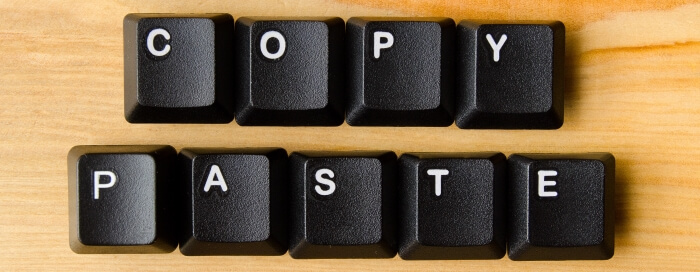If your localization process includes manual copy-and-paste procedures, it is time to analyze your process and find a better solution. Why? Because copying and pasting content is not a process. It’s a lack of process. You can do better, and you will reap the benefits.
What is wrong with copying and pasting content, and what are the alternatives?
In my 20+ years in the localization industry, I have received many localization requests that consisted of an Excel spreadsheet containing a set of user interface strings, possibly spread across multiple worksheets. Most translation tools support the Excel file format to some degree, so the easy thing for a localization provider to do would be to establish the word count and get approval for the cost, then translate the spreadsheet and return the translations to the customer.
But wait—what happens to the translations after they are handed back to the customer? It turns out that in many cases an engineer is tasked with copying and pasting the translations into some kind of application interface, one string at a time, one language at a time. What if there are 300 strings in 15 languages? That would result in 4,500 copy and 4,500 paste operations, numerous mistakes, a frustrated engineer, and a serious case of carpal tunnel syndrome.
There must be a better way!
Whenever I receive an Excel spreadsheet, or another unconventional file format to hold user interface text, I start asking questions:
- Where did those source strings come from?
- How did they get into the Excel spreadsheet?
- Where will the translations be stored?
How do the translations get from the spreadsheet to their final destination?
It turns out that, frequently, the development team didn’t know we can handle file types other than Microsoft Excel and Word and they assumed that they must convert their content to that format for translation. In reality, translation tools support dozens, if not hundreds, of unique file formats.
- RESX? No problem! There is a parser for that.
- POT? For sure! Translation tools can handle it.
- Text in a database? Yes, the strings in the database can be exported to XML, translated, and reimported.
- SVG graphics? Absolutely possible.
Some file formats may require a small amount of translation pre- and post-processing, but that’s a lot more efficient than copying and pasting hundreds or thousands of strings. Eliminating the manual work cuts down on errors and establishes a more automated, low-touch process with maximum control, while reducing the overall effort and therefore saving money.
We at PTIGlobal – as localization experts – know how to ask the right questions to determine the most efficient process. There is no need to guess. Our team includes knowledgeable localization engineers that can analyze your situation and recommend the optimal, most cost-efficient process.
Please don’t hesitate to contact PTIGlobal to discover the best way to localize your content.









